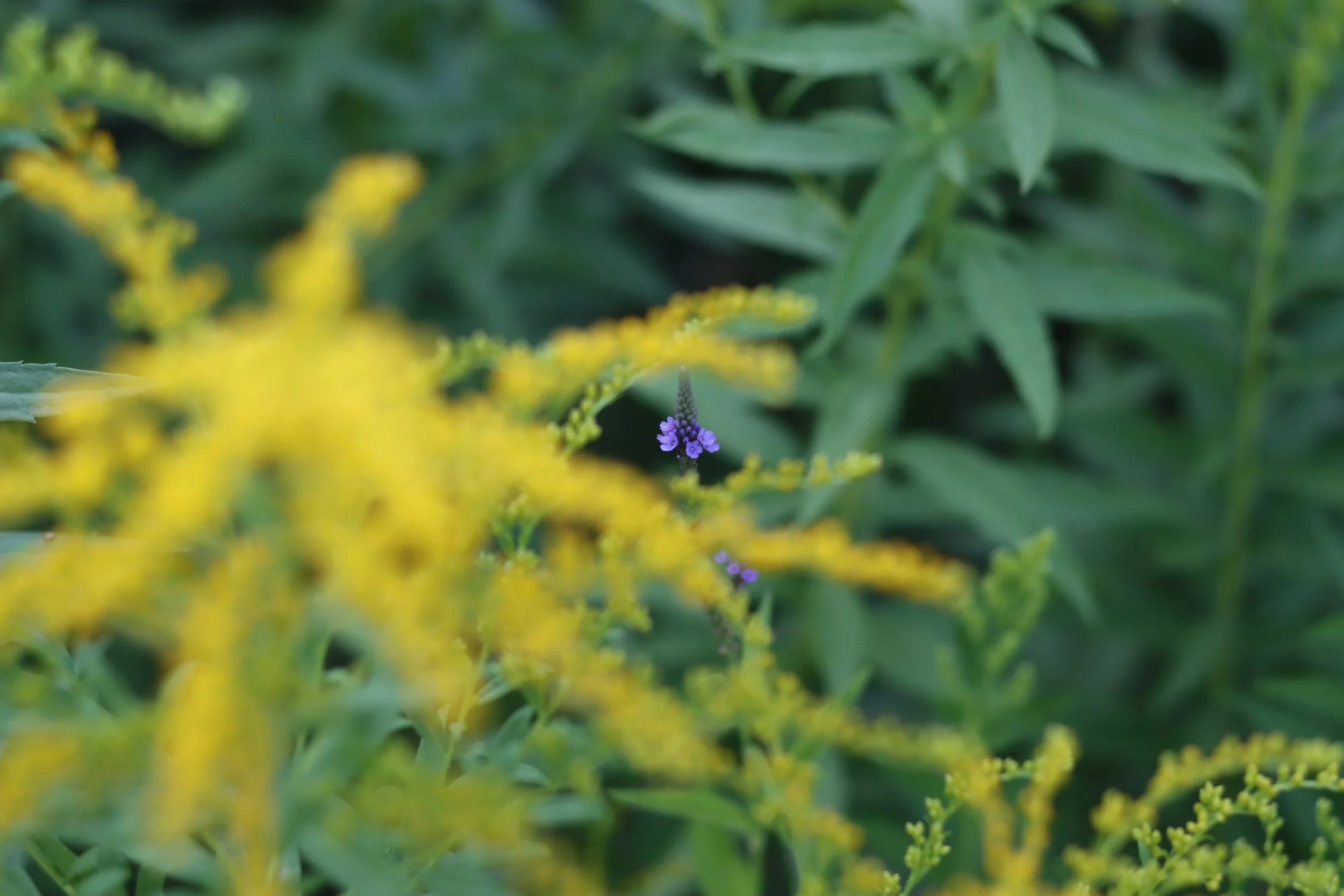Prairie Goldenrod




Prairie Goldenrod
Solidago missouriensis
An Aster family (Compositae) perennial wildflower with a large range across North America’s moist and dry prairies. It grows in full sun to part (light) shade. These plants are clumpers with some limited spread by roots and they grow up to 3 -5 feet tall depending available moisture and nutrients. The plants are heavy feeders, and will benefit from a spring and/or fall topdressing with compost.
Prairie goldenrod are crowned with flower heads of hundreds of small golden yellow flowers in late summer through fall that attract butterflies and other pollinators and beneficial insects. These plants can have colorful fall foliage and their rigid, upright structure can provide some winter interest even in a snowy garden. Goldenrods are great habitat plants because their late summer to fall bloom period make them a valuable nectar and pollen resource for beneficial insects and honeybees. Self-sows readily, cut off flower heads or strip fluffy seeds after bloom to prevent windblown seed drop. To make room for new growth in spring or to rejuvenate an old stand, cut stems to the ground in the fall or in the spring with the additional ecological benefit of overwintering habitat for stem nesting pollinators and beneficial insects.
When doing spring cutback for overwintering habitat, wait for non-freezing night time temperatures to allow for emerging insects etc. to find safe conditions. Alternatively you can cut stems, loosely bundle them and place them in a ‘bug hotel’ area or out of the way place for safe emergence in warmer conditions.
Young leaves are edible fresh or as a potherb, but may not have the best flavor, a nicely flavored tea can be made from flowers and leaves. Goldenrod has been used traditionally for its diuretic, anti-inflammatory and anti-allergenic traits among others.
Goldenrod has been called a common allergen but this claim has been discredited and the misconception is largely due to the shared bloom time with ragweed. Goldenrod pollen is too heavy to be wind-borne and is carried by insects.
USDA Hardiness zones: 3-8
Seed can be planted in spring or fall, cover very lightly or surface sow, and keep moist until germination, or spread outdoors before a period of moist soil conditions and non-freezing conditions. Germination typically occurs in 1 to 2 weeks.
Packet: 200 seeds (Because of the difficulty of cleaning goldenrod seeds, there will be lots of chaff in the packet of this variety. Over seed as germination can be sporadic!)
